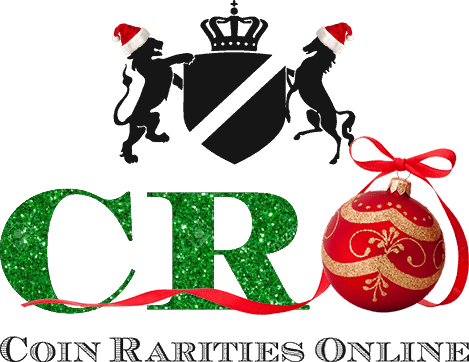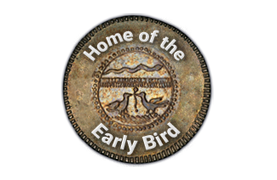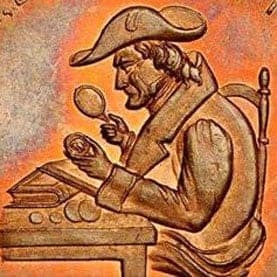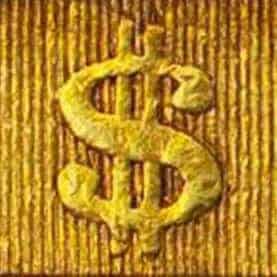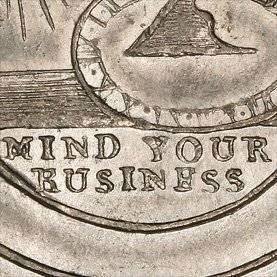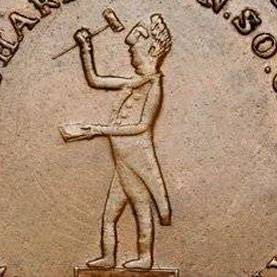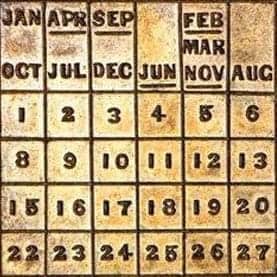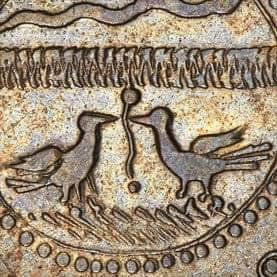February 9-11, 2006: The Long Beach Coin & Currency Expo
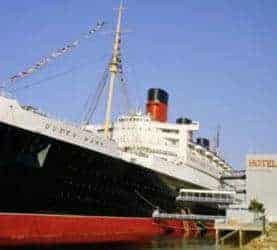
In what surely must be the unlikeliest of travel stories, we returned from the Long Beach Expo on Sunday flying from California directly into the blizzard here in New England and actually arrived a few minutes ahead of schedule. We were thinking we’d be stuck out in sunny California for a few extra days but no such luck. It was quite amazing, since we were watching the live TV updates during the flight which showed reporters standing in waist deep snow in New York and Boston looking miserable and urging local residents to stay home – yet we arrived unscathed and, most importantly, reinvigorated to start typing this recap.
And so here goes: The show was really good for us from both a buying and selling perspective – though we were slightly disappointed that some of the really neat stuff that we were excited to offer got snapped up by collectors (or their dealer representatives) instantly. Of course we like to place nice coins but we must admit that sometimes it would be more fun to have some of them around a little longer. And of course that sword cuts both ways. We saw a neat piece in another dealer’s case, considered buying it, walked across the room to our table, walked back to get it and in the minute or two that had elapsed, another customer was buying it – which leads us to our first coin moral:
1. If you see a cool coin that you like at a fair price – buy it. Odds are if you hesitate, someone else won’t. Most of our regrets through the years are for coins we had the chance to buy but didn’t.
We also had one coin certified for a client at the show, picked it up from PCGS and placed in our display case upside down for safekeeping only to have another customer see it, ask us to sell it to him and then ultimately make an offer that the original owner thought too good to pass up. And that is our second lesson from Long Beach:
2. If you see a coin you want, even if it is ‘not for sale’ make an offer – it just might be accepted. And on a related note, if you don’t see what you are looking for in a dealer’s case, ask if they have anything else. Not every coin in a dealer’s inventory is on display for a variety of reasons; some coins may be in for grading, some may be on consignment to other dealers, some may have been purchased in an auction and not delivered yet, etc. It cannot hurt to ask.
The auctions surrounding Long Beach were mediocre at best in our view. Plenty of what we see as ‘sediment’ (i.e. coins that had lingered in dealer inventories, bounced around the market or were below average for the assigned grade) showed up in the various sales to be liquidated. There were some new and fresh coins mixed in here and there, but they were widely spaced and not easy to spot for the uninitiated. Of course its very important to be able to tell the difference. Which, per today’s theme, leads to moral number 3 (and which we stress repeatedly to all of our clients):
3. The more information you have about your area of interest the more successful you will be buying the right coins. Study as much as you can. If you don’t have the time to become an expert in your area of interest, then our advice is to enlist the services of someone who does.
The show traffic was light on Thursday and light on Saturday, but we saw quite a few collectors and dealers looking for interesting coins and buying actively. As dealers, we see the usual ‘early bird’ people who tear through the bourse floor the instant it opens, but also those who take their time and stroll around on a leisurely Saturday chatting with dealers and looking at neat coins. There are many ways to enjoy this hobby and that is today’s last moral:
4. Have fun, do what feels right for you and take all advice – including that offered in this column – with a grain of salt. We strive to do well by our clients and offer advice that, in our experience, is useful. But ultimately you are the one who must decide what works for you.
See you in Baltimore (and maybe Boston)!
